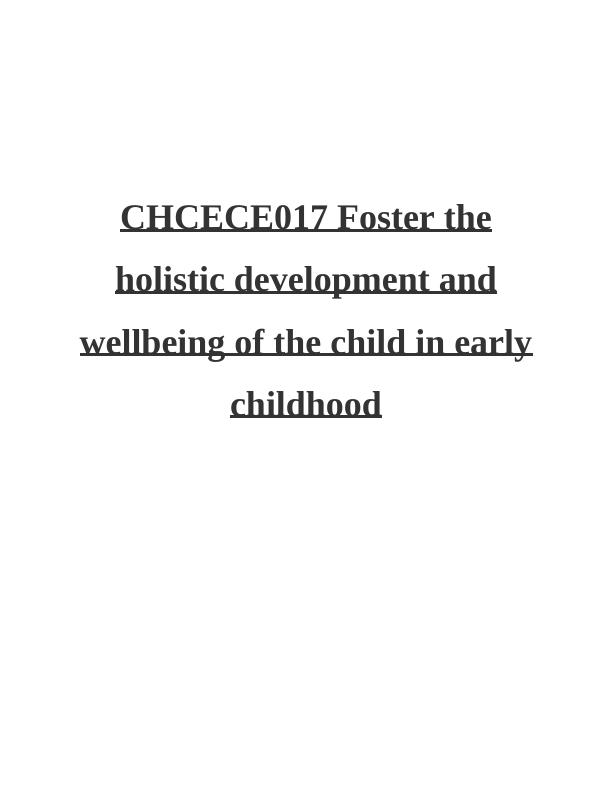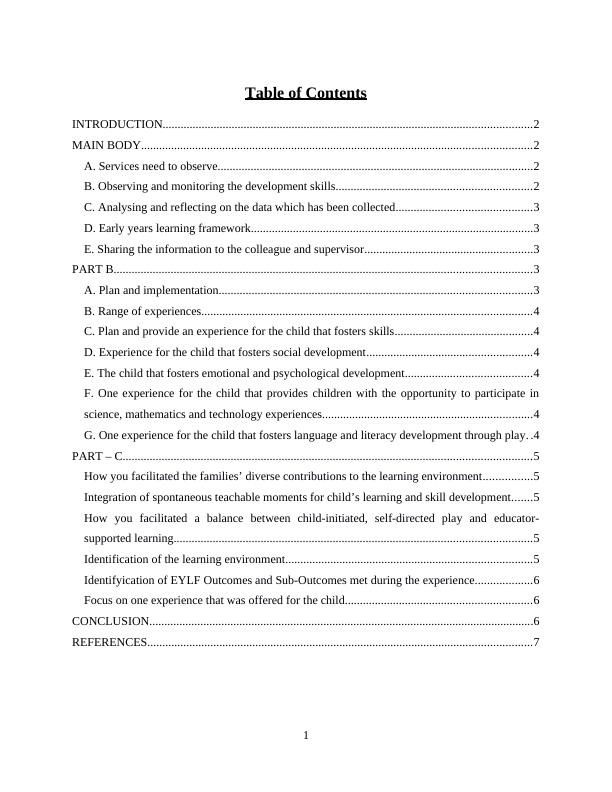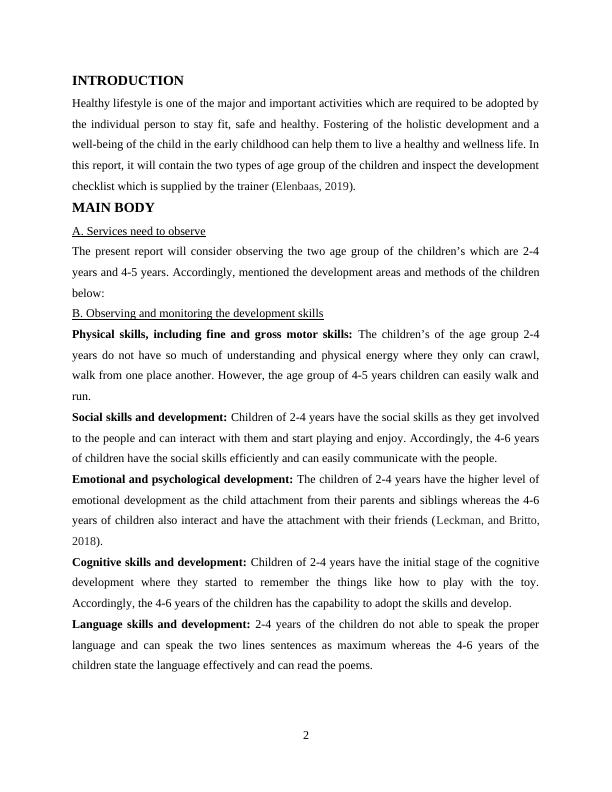CHCECE017 Foster the Holistic Development and Wellbeing of the Child in Early Childhood
8 Pages2370 Words281 Views
Added on 2023-06-12
About This Document
This report discusses the importance of fostering the holistic development and wellbeing of children in early childhood. It covers observing and monitoring development skills, early years learning framework, planning and implementation, range of experiences, and more. The report also includes how to facilitate families' diverse contributions to the learning environment, integration of spontaneous teachable moments, and identification of EYLF outcomes and sub-outcomes met during the experience.
CHCECE017 Foster the Holistic Development and Wellbeing of the Child in Early Childhood
Added on 2023-06-12
ShareRelated Documents
End of preview
Want to access all the pages? Upload your documents or become a member.
Design and Implement Curriculum for Children's Learning and Development
|49
|10520
|372
Foster the Holistic Development and Well-Being of The in Early Childhood Project
|12
|2483
|58
CHCECE010 Support the Holistic Development of Children in Early Childhood Theory Assessment Tasks
|11
|2546
|144
Importance of In-depth knowledge for Early Educators Assignment
|13
|3122
|90
Child Development Stages: Physical, Cognitive, Social and Emotional Development
|8
|2086
|217
Child Development Stages: Physical, Cognitive, Social and Emotional Development
|8
|2086
|293



